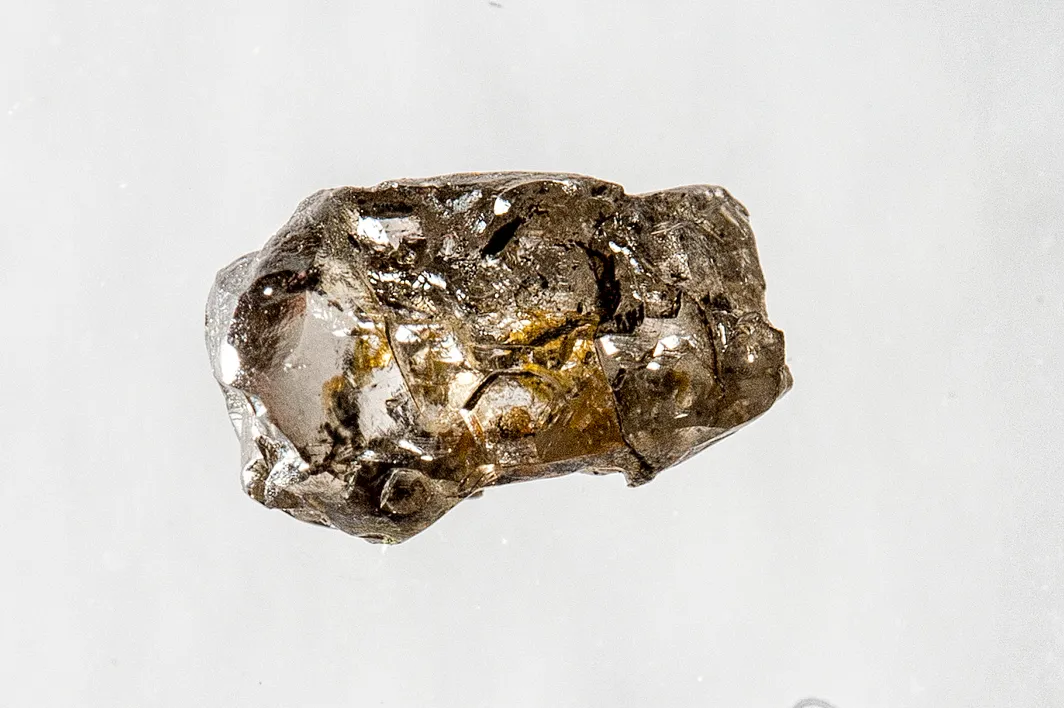There May Be a Second Massive Ocean Deep Beneath the Surface
Chemically bonded to minerals in the transition zone, Earth’s mantle may be rather wet
/https://tf-cmsv2-smithsonianmag-media.s3.amazonaws.com/filer/f3/dd/f3dd6b98-be95-4ea9-ac56-d041b61c545d/03_13_2014_earth_sectional.jpg)
Deep within the Earth, staggering pressures mix with high temperatures to compact regular materials into exotic minerals. Under these extreme conditions, one familiar mineral—a blend of magnesium, iron and sand that geologists call olivine (and most people would know by its gemstone form, peridot)—is transformed into a material called ringwoodite. This material is produced in Earth's so-called “transition zone,” from around 255 to 416 miles depth, where the outer mantle turns to the inner mantle. While ringwoodite has been found before, in meteorites crashed to Earth, ringwoodite of terrestrial origin is a rare find.
In Brazil, however, researchers found an earthly sample of ringwoodite, likely rushed to the surface by volcanic activity, says Hans Keppler for Nature. Normally, as it moves toward the surface, ringwoodite would break down, turning back to regular olivine. Finding the ringwoodite was a treat. But according to a study into the mineral's chemical composition, the ringwoodite sample had an even greater surprise locked inside. Geochemist Graham Pearson and his colleagues found that roughly 1.5 percent of the ringwoodite's weight is made up of water—an answer to the long-standing scientific question about whether the inside of the Earth might be a little bit wet.

If this sample of ringwoodite is representative of the rest of the transition zone, says Keppler, “it would translate to a total of 1.4 × 10^21 kg of water — about the same as the mass of all the world’s oceans combined.”
If the water is there, though, it is anything but accessible.
In the 1960s, Soviet scientists set out on a bid to drill the deepest hole they could. Their plan was to make it down to the Mohorovičić discontinuity, the boundary between the crust and the upper mantle, at around 22 miles depth. They dug for 24 years, and made it just 7.5 miles. The water, if it's there, would be another 315 or so miles yet.
Even if we could reach it, the abundance of water in the transition zone is not just lying around in a great pool. Under these extreme conditions, water's H2O is split into two—its H and OH separated, tied up with ringwoodite and other minerals.
So if the transition zone water is so far out of reach, what good is knowing it's there? Locking down the presence of water, say Pearson and colleagues in their study, is an important factor in understanding volcanoes and magma, the history of Earth's water, and the processes that control the evolution of our planet's tectonic plates.
Learn about this research and more at the Deep Carbon Observatory.
/https://tf-cmsv2-smithsonianmag-media.s3.amazonaws.com/accounts/headshot/smartnews-colin-schultz-240.jpg)
/https://tf-cmsv2-smithsonianmag-media.s3.amazonaws.com/accounts/headshot/smartnews-colin-schultz-240.jpg)